Shannon V. OKeets
Posts: 22095
Joined: 5/19/2005
From: Honolulu, Hawaii
Status: offline

|
quote:
ORIGINAL: dale1066
Seeing as how the AI data for Japan is a little lite would it be worth getting discussions going on tactics for defending / attacking various pacific objectives or is it objectives in the pacific? 
Eg quote:
E.IV.7 Australia
Interests : Resources, Victory hexes & red factories, loss of AUS units if conquered
Control of the Coral Sea may be necessary to achieve something in australia.
New Caledonia should also be taken for the resource (even if only to deny it to the allies).
The interest of conquering Australia is fairly low.
Not sure I agree about it being low surely that depends on location of the Australian units ? if Singapore garrioned by aussie mil/terratorials and Australia weakly defended or empty could save a lot of work? what if the Australian units are the mainstay of western desert defence/offence?
BTW what does happen to terratorial units if you conquor their home country?
If you want to. Here are the more important sections from Japan's strategic plan for the AIO (about 12 of the 15 pages).
==========================
1.1.1 Victory cities, vital hexes, and sea areas
Victory Cities - Defense
Homeland
∙ Tokyo
Asia
∙ Port Arthur
∙ Taibaku
∙ Shanghai
Pacific
∙ Kwajalein
∙ Batavia
Vital Hexes - Defense
∙ Makassar
∙ Menado
∙ Bonin Islands
∙ Air superiority over oil hexes, to protect from an invasion.
Vital Sea Areas - Defense
∙ Bismarck Sea (air superiority)
∙ Marianas (air superiority)
∙ China Sea (air superiority)
∙ South China Sea (air superiority)
Victory Cities - Offense
∙ Chungking,
∙ Lan Chow,
∙ Manila,
∙ Singapore,
∙ Honolulu,
∙ Rabaul,
∙ Dutch Harbor,
∙ Pago Pago,
∙ Columbo
∙ Truk [If using optional rule for Naval Supply Unit, Truk is less important. ]
Vital Hexes - Offense
∙ Legaspi
∙ Resource in 0538 and a rail path to a port
∙ Resource in Si-An and a rail path to a port
∙ Resource in 0531 and a rail path to a port
∙ Resource in 0630 and a rail path to a port
∙ Midway
∙ Wake Island
Vital Sea Areas - Offense
.
.
.
.
.
1.1.6 Master production plan (MC)
1.1.6.1 Resources and Convoys
Japanese held factories and resources as of Sep/Oct 1939:
∙ Japan’s home islands - 14 factories and 1 resource,
∙ Manchuria - 2 factories and 3 resources,
∙ Korea - 1 factory and 1 resource,
∙ Formosa - 1 resource,
∙ China - 2 red factories (Shanghai and Canton) and 4 resources (1 of which is in Hainan),
∙ Total of 17 factories and 9 resources.
Enemy held factories and resources as of Sep/Oct 1939:
∙ Indochina - 1 resource,
∙ Philippines - 1 resource,
∙ Malaya - 2 resources,
∙ NEI - 4 oil,
∙ China - 2 red factories and 7 resources,
∙ USSR - 1 red factory and 4 resources,
∙ Burma - 1 oil,
∙ India - 1 red factory and 4 resources,
∙ Australia - 1 red factory and 3 resources,
∙ New Caledonia - 1 resource,
∙ Persia - 3 oil,
∙ Saudi Arabia - 1 oil,
∙ South Africa - 3 resources.
1.1.6.2 Build Points and Trade Agreements
Japan receives:
∙ 2 resource points from the USA,
∙ 2 oil from the USA,
∙ 2 oil from NEI
Japan sends:
∙ 1 BP to the USA.
This generates the following BPs:
∙ 1939: production multiple = .75, 13 RP => 13 PP => 10 BP => 9 BP.
∙ 1940 and 1941: production multiple = 1, 13 RP => 13 PP => 13 BP => 12 BP.
∙ 1942: production multiple = 1.25, 13 RP => 13 PP => 17 BP => 16 BP.
∙ 1943+: production multiple = 1.5, 13 RP => 13 PP => 20 BP => 19 BP.
This assumes that the trade agreements stay in effect, which will not happen. Conversely, Japan should get the Indochina resource once Vichy is declared and if Japan can capture 3 resources from China, that will combine to offset the loss of resources from the USA and yield a gain since Japan will not have to send a BP to the USA.
Japan should seriously consider saving oil points early in the war (if that optional rule is in effect), since oil will be in scarce supply once war is declared against the USA and CW.
Japan’s 17 factories should be adequate through 1940 and if a lot of resources are coming in, then Japan is likely to have captured one or more of the 5 red factories that are within striking range to use the additional resources. Only if Japan is doing exceptionally well early should building new factories be considered.
1.1.6.3 Force Pool, Lend-Lease, and Building Ahead
1.1.6.4 Production Priorities
Land
∙ Build a lot of cheap but elite land units for garrison duty.
Naval
To defend its envisioned co-prosperity sphere, Japan needs a large and powerful navy, which it has in 1939, but which should be made even stronger with new naval units.
∙ Many submarines to disrupt enemy shipping (this submarine war isn’t waged to decrease the enemy's production but simply to oblige him to defend the many sea areas that contain convoys.
∙ Carriers built to arrive before Sep/Oct 1941 (all 5+ movers in the construction and repair pool should be finished).
∙ As many Mogami Class CA units as possible.
∙ The BB Yamato, if possible (and the BB Musachi, but that’s expensive).
Air
∙ Many air units (long range FTRs and NAVs).
Special
∙ Build a synthetic oil plant ASAP (preferably in 1939).
An aggressive war against China changes the production emphasis to:
∙ Many infantry type units, fast moving if possible, but not necessarily elite.
∙ ART units.
∙ As many HQs as possible (3 minimum) to maintain supply.
∙ Some Armor (even if only a MECH DIV) because it can be used advantageously in Clear and Forest hexes.
∙ Some more air units, including enough FTR to keep air superiority over China.
∙ Enough TAC factors to support Japanese attacks and defend against Chinese attacks.
War against the USSR requires:
∙ At least 2 HQ.
∙ Enough infantry type units to eliminate the USSR garrisons.
∙ Basically this is a 1939 or 1940 war so the units for it already exist and just need to be deployed to the USSR front line.
.
.
.
.
.
Strategic Plans
Germany sets the pace and orientation of the Axis, so, in general, Japan must comply with Germany's choices. Japan’s overall strategic objectives are to:
∙ Expand to accumulate the most resources & oil (and red factories to a lesser extent). Japan has a lot of factories, and not enough resources to keep them all in use. Japan also drastically lacks oil, so building at least 1 Synthetic Oil early is mandatory. If Japan does not expand, it will die.
∙ Build the most effective army, navy, and air force to ward off the Allies.
∙ Keep as many victory cities as possible.
∙ Strategic plans that lead to a longer war in the Pacific are probably not good for Japan.
Strategic Plan #1- Historical
∙ Establish a neutrality pact with the USSR.
∙ Attack China.
∙ Expand rapidly across the Pacific to create the historical co-prosperity sphere.
∙ Additional expansion: India, Mideast, Madagascar, South Africa, Egypt, Australia, New Zealand, Honolulu, America Samoa.
Strategic Plan #2 - Early DOW USSR
∙ DOW the USSR early aiming to capture resources and the Vladivostok Factory.
∙ Then attack China, to contain them and capture resources.
∙ Expand rapidly across the Pacific to create the historical co-prosperity sphere.
∙ Additional expansion: India, Mideast, Madagascar, South Africa, Egypt, Australia, New Zealand, Honolulu, America Samoa.
Strategic Plan #3 - CW First, USA Second
The advocates of this strategy say it’s good to attack the CW separately and later the USA. The idea is that by focusing all of Japan’s offensive power on one enemy at a time, more can be accomplished (especially if 2 surprise impulses can be achieved). However, the US Entry effect of the first DOW may well push the USA to war much sooner than usual.
∙ Attack China and/or the USSR
∙ DOW on the CW and capture as many of its possessions as possible.
∙ DOW on the USA, or wait for their attack, which should come soon.
Strategic Plan #4 - Crush the CW
∙ Establish a neutrality pact with the USSR.
∙ Defend in China. China becomes a sideshow, and the Pacific war begins much sooner.
∙ DOW on the CW early and capture as many of its possessions as possible.
Strategic Plan Components
Attack China
Major Japanese Objective
∙ Destroy the Communists in 1939-1940
Important Japanese Objectives
∙ Kill as many Chinese units as possible.
∙ Lose as few units as possible, especially before 1942.
Garrisons (mostly anti-partisan)
∙ China
∙ Korea
∙ Manchuria
∙ Indochina
∙ Other occupied countries that might produce partisans.
Attack the USSR
∙
Expand to historic co-prosperity sphere
Control before DOW on CW and/or USA
∙ Indochina
∙ Siam (for attacking Malaya)
Dominate sea areas
∙ Bismarck Sea
∙ Marianas
∙ China Sea
∙ South China Sea
Mandatory conquests
∙ Philippines (should need an easy invasion on Philippines, followed by an assault of Manila)
∙ Singapore
∙ Malaya (needs a fairly high involvement of troops from the land).
∙ Batavia
∙ NEI (should need an easy invasion on Java, followed by an assault of Batavia).
∙ Rabaul
Possible other conquests
∙ Honolulu if possible. It is very risky and may prevent the Japanese from achieving the other mandatory objectives.
Garrisons (these are either anti-invasion and/or partisan garrisons)
Crucial
∙ Truk
∙ Singapore
∙ Manila (an objective and important multi-sea area port for the fleet; a pivotal part of Japan's defense, and if the Allies control it, both the China Sea and the South China Sea will soon be lost and everything will collapse)
Important - Outer Ring
∙ Kwajalein / Eniwetok
∙ Rabaul
∙ Batavia
∙ Makassar
∙ Menado
Important - Inner Ring
∙ Bonin Islands
∙ Legaspi
Normal
∙ Oil hexes (to protect from invasion)
Hexes that can serve as enemy airbases which should be held to prevent the enemy from gaining air superiority over:
∙ Bismarck Sea
∙ Marianas
∙ China Sea
∙ South China Sea
Additional Expansion
Objective #1 - North Borneo
Should be conquered after the initial expansion and before the Allies return, so that they do not easily acquire air bases for controlling the South China Sea.
Objective #2 - Burma
Interests: Oil, cut the Burma Road and lend lease to China, enable land attack into India.
Objective #3 - India
Interests: Resources, Victory hexes and red factories, loss of IND units if conquered.
Landing in Cocandia has advantages. It’s a port with many of resources nearby. Calcutta is near, and could be attacked jointly with troops coming from Burma.
Objective #4 - Aden
Interests: Victory hex, enables control of the Red Sea and land attacks into Egypt.
Can be invaded if the CW is in trouble, or if Japan is very strong and has secured good bases in India.
Objective #5 - Madagascar
Interests: Victory hex.
Objective #6 - South Africa
Interests: Victory hex, disruption in the CW, loss of SA units if conquered.
Objective #7 - Australia
Interests: Resources, Victory hexes and red factories, loss of AUS units if conquered. However, the interest in conquering Australia is fairly low. Control of the Coral Sea may be necessary to achieve success in Australia.
Objective #8 - New Caledonia
Interests: Resource (even if only to deny it to the Allies).
Objective #9 - Mideast countries (Persia mainly)
Interests: Oil to reorganize units, and deny Oil to the enemy.
Outside of a normal conquest plan, Japan can simply align countries if declared war upon by the USSR for example, and send peacekeepers to defend the oil wells. Japan will need to be at war with the conqueror to stay there though.
Objective #10 - New Zealand
Interests: loss of NZ units if conquered. However, the interest in conquering New Zealand is very low.
Other Objectives
Those free invasions should be made by DIV on SCS if the places are undefended (to make the USA lose time when they return).∙ Midway if not garrisoned. It is a valuable airbase for the US comeback.
∙ Dutch Harbor if not garrisoned (Objective).
∙ Pago Pago if not garrisoned (Objective).
∙ Wake Island if not garrisoned. It is a decent airbase for the US comeback.
∙ Columbo if not garrisoned (Objective).
Garrison Types ∙ Defensive Garrisons prevent or hamper invasions and/or paradrops with their presence or ZOC. A hex is a defensive garrison hex only if it is threatened by enemy units.
∙ Anti-partisans Garrisons prevent or hamper partisans from appearing with their presence or ZOC. Locations that are appropriate for anti-partisan garrison are: resource hexes, red factory hexes, and key railroad hubs.
Garrison Ranking∙ Crucial: capitals, objective hexes, ports where an important fleet is based.
∙ Important: key hexes (e.g., Gibraltar, Malta, Copenhagen), multi-sea area ports (e.g., Manila, Canton, Menado, Makassar, Rabaul).
∙ Normal: Invadable and/or paradropable coastal hexes (Venice for example) and anti- partisan hexes.
∙ Less Important: invadable hexes and/or paradropable coastal hexes and anti- partisan hexes, that are already covered by a friendly ZOC, or with low chances of being chosen by the enemy for invasion and/or paradrop.
Garrisoning Guidelines
∙ Give the least protection to the place where you would want the enemy to attack. Choose where the enemy will land by creating a weak spot in your defenses.
∙ Always garrison Crucial hexes. Rare exceptions may happen, for example when the garrison must move to kill a partisan or for another reason, but as soon as possible the hex should be garrisoned again.
∙ Garrison Important hexes as soon as possible with 1 unit. Add a second unit once most of the important garrison hexes have 1 unit, assuming more units are available.
∙ Garrison Normal hexes with 0 units, and 1 unit once Important hexes begin to get garrisoned by 2 units.
∙ If possible, the placement of a defensive garrison should enable it to also serve as an anti-partisan garrison.
∙ Defensive garrisons should be kept in supply.
∙ Anti-partisan garrisons are not necessarily in supply. An HQ can come (via rail move) if there is a partisan surge.
Japanese Garrisons
Crucial
∙ Shanghai
∙ Canton (if fleet)
∙ Port Arthur
∙ Harbin
Important
∙ Canton but if the fleet stationed here is big it becomes Crucial
Normal
∙ Changsha with a MTN unit (or another 4-mover) to control the southeast mountains
∙ The rest depend on where the frontlines are.
∙ Emphasis is on: protecting flipped planes and most ports.
.
.
.
.
Priorities for targets
For Japan in late 1944 and 1945 the more potent weapon is the ability to interrupt the enemy preparations rather than the threat of a new amphibious blitzkrieg. When the Allies are threatening to invade, it is bad to reduce the garrison by sending troops overseas.
As Japan try to keep a couple of carriers active until the end of the game. This provides the flexibility to do a Port strike on any Allied amphibious force building up within range of the Home Islands. Even if the entire Japanese fleet dies in the attack, it is worth the effort if Japan can sink/damage a few transports and prevent the enemy from doing Operation Olympic/Coronet.
As the Japanese, my most precious ships are the sea lift units.
Once you have a numerical advantage against a major power, attack (to eliminate) his offensive capability.
∙ At sea this is (in order) AMPH, TRS, and carriers.
∙ On land this is Armor, MECH, HQs, and Para.
∙ In the air this is ATR, tactical bombers, and strategic bombers.
Second, attack the enemy’s production capability so he can't rebuild those unit types.
∙ At sea that is convoys.
∙ On land that is factories and resources.
∙ In the air that is strategic bombing.
Third, take ground to occupy his capital and cities with factories to bring about complete conquest. At sea this may mean taking a series of ports in preparation for invasion.
Consider the utility of the factory or resource for both sides. Capturing a red factory when we need them, or a resource when we need them, has to be taken into consideration. When playing with oil, that too is a consideration. And finally there is always the possibility of the enemy retaking the hex. If destroy a factory, its recapture becomes moot.
Carriers, even with a whole battle fleet achieve nothing, if they do enable invasions involving TRS & AMPH. Comparing Carriers to Fighters, the latter achieve air superiority, allowing the bombers and ATRs to do their job (which is to help the ground forces take territory). Carriers gain air superiority (and hence sea superiority) to allow TRS and AMPH (and other sealift) to do their job (which is to help the ground forces take territory). Offensive capability is the ability to seize ground, and carriers seize nothing. Attrition is available in land, air, and at sea; to fight just to inflict casualties, with no territorial objective.
Carriers as an offensive force at sea can control sea areas. The AMPH and TRS units are clearly for invasions. If a major power does not have carriers, then attacking enemy naval units at sea is limited to what can be achieved using land based naval air and submarines. The influence of battleships and other surface naval units on controlling sea areas is almost non-existent when air power is present in a sea area. And it is hard to maintain a lot of land based naval air units positioned such that they control multiple sea areas. But given carriers with a decent range, 2 or 3 carriers can dominate a half a dozen sea areas without ever leaving port - their mere presence is threatening. Submarines can be an offensive threat, but they need to be present in fairly large numbers. 1 or 2 submarine units can usually be defended against.
Though carriers can't take or occupy land hexes, their ability to threaten and/or directly control sea areas makes them an offensive threat. They can cut communication lines putting units out of supply and preventing reinforcements. For example, let's assume that Germany has invaded Britain and is making good progress against the mishmash of land units Britain has put together to defend the homeland. If the Commonwealth has carriers, then they can be used to isolate the German units and let the British counterattack rather ruthlessly. Without CW carriers, the Germans have a real good chance of maintaining air superiority over the necessary sea areas and keeping units in supply and reinforced by sea. This all ties back to an earlier post on this topic which was that destroying the Japanese carriers should be a high priority because it eliminates their offensive capability.
Along a similar vein, as the USA player I often try to build two carrier based task forces that are comparable to what the Japanese can put to sea. I then use one of the carrier task forces to support invasions and the second remains in port to 'shadow' the Japanese fleet. If the Japanese put to sea, the second USA task force engages them. I can accept slightly poorer odds since attrition of naval units is much harder on the Japanese. The Japanese carriers are an offensive capability in that they can initiate naval engagements and destroy USA naval units. As the USA whittles the Japanese carriers down to few and then none, the USA increases its range of options on where to attack and how often.
Attrition is a separate, fourth priority, though at times it will be much more important. For instance, when the other, higher priorities can not be achieved because there are simply too many enemy units in the way.
Carrier (and long ranged land based aircraft) can be classified in this Force Projection category. This is an ability that we can also find at land with PARA, MAR and in a lesser extend outflanking units (lesser extend because they are limited by their movement points, the terrain and enemy presence & ZoC), who can all project a force in the enemy territory with the aim of cutting supply thus rending the attack on the main objective be easier.
Tactical opportunities come in two flavors: what we can do to the enemy and what he can do to us. These both should be checked every impulse before the action type is chosen. Always be on the lookout for the coup de main where the Capitol can be taken immediately.
Use the Japanese MAR corps if necessary to take a garrisoned Wake; or else Nimitz, the SeaBees, and the Hellcats will be based there soon, and supporting an attack on the Bonins. And the Bonins can control Japan’s fate. In 1943-1944 keep MAR reserves to counterattack islands, especially ones like the Bonins on sea-boundaries.
A major Japanese strategic decision can be whether to go for Honolulu. There are pluses and minuses.
Japan had previously been beating China to a pulp so that by the end of 1940 China was down to just the Communist city in the north and the Nationalist city in the south-western mountains both of which were threatened. At the same time the Allies were quite hard pressed on USE vs. Japan, especially with a big tension problem since their entry was low and they had either rolled high and not gotten a chit or pulled a 1 or 0 to go into the tension pool. By end of 1940 the USA had about 16 total entry vs. Japan and no more options to pick to try to gain tension. Before Sep/Oct 1940 we thought China could hold out until a USSR "surprise" offensive could come crushing down on Japan in 1941.
Japan attacked in Jul/Aug on a 10% global "fine" impulse; blasted through 4 CW corps in Malaya and grabbed a bunch of islands in the east Pacific while landing in NEI. During Sep/Oct 1941 Japan took out NEI. But still made no incursion into the Indian Ocean, where due to the Wallies considering this theater the crucial one in the "Pacific war" (to prevent Japan and Germany from linking up). Current defenses in the Indian Ocean from east to west consists of Burma (INF +2 MIL +2 TERR), India (MOT + MECH + 2 TERR + MIL + GAR), Ceylon (MIL), "double minor port" (Bel TERR), "Triple minor port" (INF), Aden (wp INF + TERR), Somalia conquered from IT (zip), Madagascar (MIL putting ZOC on both ports!), "double minor port in Portuguese Africa(?) (TERR) and South Africa (MIL, MECH, TERR).
Possessing the Suez Canal Zone allows the EuroAxis to support and be supported by Japan. This can be done either by stationing a part of the Japan carrier fleet in Aden where it has the option of joining the battle for the Mediterranean, or shift a part of the Italian fleet to Singapore to reinforce the Japanese anti-submarine war. It can be very helpful for Japan to be able to start a turn with a land or combined, knowing that the Italian fleet will help protect Japanese convoy lines. Likewise if Japan is hard pressed Italy can build convoy points to reduce the burden on Japan of building those.
When CW attacks Portugal, a good Japanese player will defend the Portuguese colony in south Africa. The double minor port there is an awesome staging point for a later super-combined surprise attack on the CW. Japan should consider attacking Portugal to grab this very area. Perhaps even Portugal itself and the Azores if CW is being a bit too timid. All it takes is for Japan to sail a 5-range SCS into Italian east Africa, rebase a couple of convoys there in the next impulse 2 and reorganize them with two 4-range transports. Voila, Japan can attack the African colonial holdings of Portugal on turn 1. With more time to prepare Japan can even make a gambit to grab Portugal itself with 2 DIVs + shore bombardment + carrier support, or just the Azores, from bases in Libya.
_____________________________
Steve
Perfection is an elusive goal.
|
 Printable Version
Printable Version
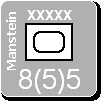






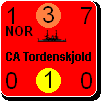
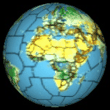
 ) then its LBAs are stretched, and the CVs are the mobile forces that can engage the allies where they choose to attack. Thus CVs are very important for Japan.
) then its LBAs are stretched, and the CVs are the mobile forces that can engage the allies where they choose to attack. Thus CVs are very important for Japan. 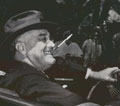

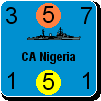
 New Messages
New Messages No New Messages
No New Messages Hot Topic w/ New Messages
Hot Topic w/ New Messages Hot Topic w/o New Messages
Hot Topic w/o New Messages Locked w/ New Messages
Locked w/ New Messages Locked w/o New Messages
Locked w/o New Messages Post New Thread
Post New Thread